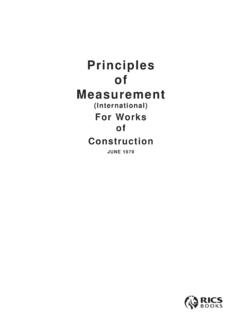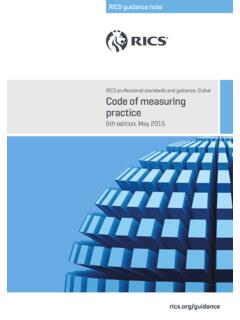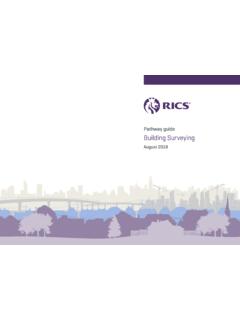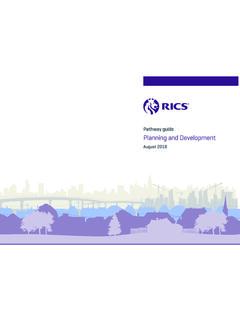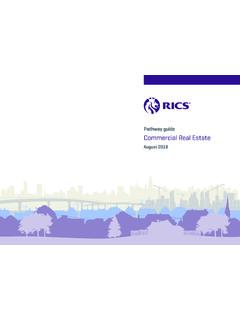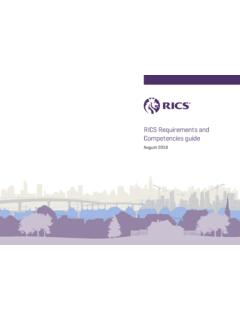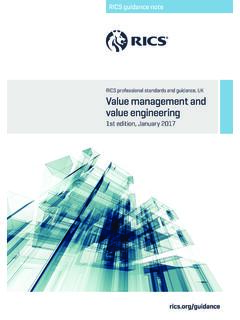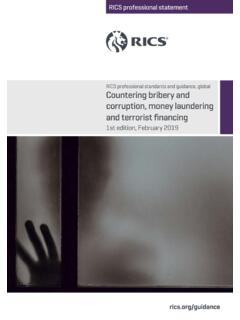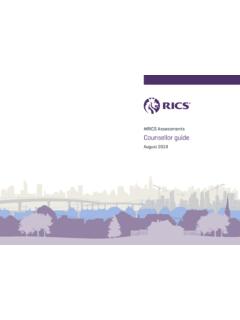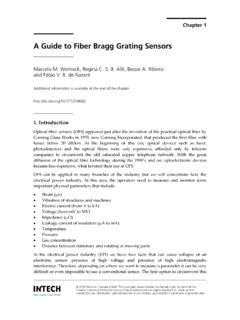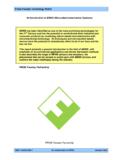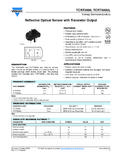Transcription of Drones: applications and compliance for surveyors
1 RICS insight : applications and compliance for surveyorsMay acknowledgmentsFigure 2 is reproduced with permission from SenseflyFigures 3 6 are reproduced with permission from SLR ConsultingContains public sector information licensed under the Open Government Licence by the Royal Institution of Chartered surveyors (RICS)RICS, Parliament Square, London SW1P 978 1 78321 355 9 The views expressed by the authors are not necessarily those of RICS nor any body connected with RICS. Neither the authors, nor RICS accept any liability arising from the use of this rights reserved. No part of this publication may be reproduced or transmitted in any form or by any means, electronic or mechanical, including photocopy, recording, or any information storage and retrieval system, without permission in writing from the RICS 2019Ty p e set using Ty p efiDrones: applications and compliance for surveyorsMay 2019 AcknowledgmentsAuthorPeter Kinghan MRICSP rofessional Group LeadJames Kavanagh FRICSP ublishing teamProject manager: Ellie ScottEditor: Katie PattulloWith special thanks to.
2 Jon Mills (University of Newcastle and International Society for Photogrammetry and Remote Sensing)Robert Garbett (Drone Major Group)James Dunthorne (Association of Remotely Piloted Aircraft Systems UK)Charlton Bland (Atkins)Mark Lawton (Chartered Institution of Civil Engineering surveyors )Rory Stanbridge (The Survey Association)Clive Boardman (The Survey Association)Richard Armitage (Remote Sensing and Photogrammetry Society, CAA and BSI)Drones: applications and compliance for surveyorsRICS insightiiContentsAcknowledgments iiForeword 1 Glossary 21 Introduction Types of drones.
3 Size of the drone industry .. 72 Opportunities and challenges Opportunities .. Challenges .. 103 Sensors and drone innovation Cinema/video .. optical cameras .. Thermal .. LiDAR .. optical gas imaging .. Multispectral .. Hyperspectral .. 154 Potential uses of drones Use of drones in urban environments .. Environmental monitoring .. Humanitarian and sustainable development .. Monitoring of volcanoes.
4 175 Drone regulations General aviation rules .. Commercial regulations .. Jurisdiction-specific legislation .. Future rules and regulations .. Standards .. 246 Using drones in your business 257 Conclusion 278 References 289 Further reading insightMay 2019ivMay 2019 RICS insightDrones.
5 applications and compliance for surveyorsForewordDrones, or to give the technology its correct moniker, unmanned aerial vehicles (UAVs) or unmanned aerial systems (UASs), are a rapidly evolving and highly adaptable form of disruptive technology. The technology has multiple potential applications within numerous surveying-related sectors, which range from geospatial surveying and mapping to scanning, building surveys, environmental monitoring and agriculture, to name just a few. This insight paper is designed to address a complex sector and to underline the critical importance of adhering to national and regional legislation and the associated regulations.
6 UAVs are easy to access but more challenging to use. These challenges range from adhering to the relevant jurisdiction s operating regulations, understanding the necessity for appropriate levels of training (piloting) and assessments to, importantly, providing the survey output clients expect from a professional surveyor. Although UAVs can be used for a wide variety of survey-related applications , we also wanted to give surveyors an insight into the importance of the sensors the drones carry, and how development of these sensors will play a pivotal role in the future success of the sector. Technological miniaturisation of laser scanning equipment, such as LiDAR, and the resurgence of high accuracy photogrammetry (and its related software) have meant UAV output and accuracy can now compete with the more established technology, such as satellite imagery and manned aircraft.
7 Yet it is important to understand not only the potential applications of UAV use, but also its limitations. UAVs have evolved beyond the hype and are now starting to become operationally viable on an expanding commercial basis. Of course, UAVs are not just for surveyor use and can be used by numerous other professions and sectors, but we are part of a broad church and believe that this insight paper provides an opportunity to understand and appreciate the potential benefits of UAV use. We are indebted to our industry colleagues for the peer-review process and commentary that this insight paper has received, and hope you find it as interesting an area as we believe it KavanaghGlobal Land Standards 2019 RICS insightGlossary3D point cloud3D geometric information, mainly acquired through laser scanning and photographic surveying technologies.
8 It is used for digital surface modelling (DSM), as-built building information modelling (BIM), digital elevation modelling (DEM) and digital terrain modelling (DTM).Agronomic characteristicsRelating to the science of soil and plant 722 Unmanned Aircraft System Operations in UK Airspace markingCertification mark that indicates conformity with health, safety and environmental protection standards for products sold within the European Economic EU s Earth observation operatorPerson or organisation who manages the drone, but is not necessarily controlling the pilotPerson who operates the drone s flight by manual use of the controls or, if the drone is flown automatically.
9 Is able to monitor its course and intervene by adjusting the flight conspicuityAutomatic identification of all airspace users, including feature using GPS to define geographical dataData that includes a direct or indirect reference to a location on radiometric imageImage associated with a geographical location, taken with a thermal sensor that has temperatures of individual image rigid frame acting as a pivot and allowing full rotation on a single : applications and compliance for surveyors2 May 2019 RICS insightInertial measurement unitElectronic device used to provide position data. It measures and reports a body's specific force and angular rate using a combination of accelerometers and of sightAircraft must be able to be seen clearly by the person flying it at all times when the aircraft is mosaicsA group of orthoimages (geometrically corrected aerial imagery)
10 Stitched together to form a new composite imageryAerial photography, where the scale has been corrected geometrically to take into account any optical distortions from the sensor load, usually measured in terms of weight, that is carried by the drone, a science of generating measurements from photographic object orbiting Earth, or any other planet, for the purpose of either communication or data unmanned aircraft (SUA)Any aircraft operating without a human pilot on qualified to monitor an object s temperature variations through radiation detection, either with or without visible aircraft system (UAS)Whole system that includes a human-operated control base, UAV (see below) and a command and control system linking vehicle and aerial vehicle (UAV)Aircraft with no human pilot on board.
